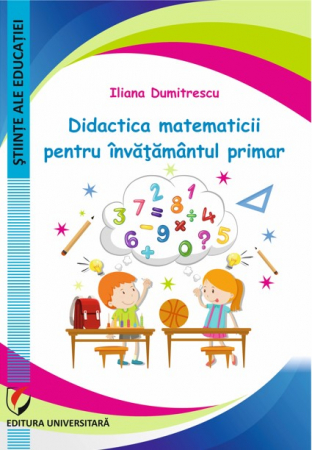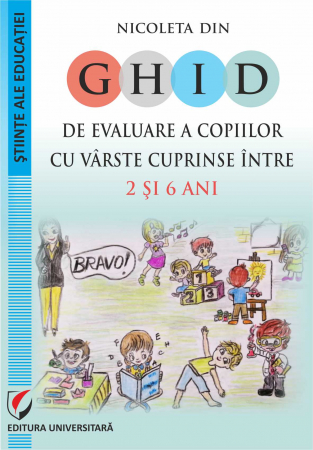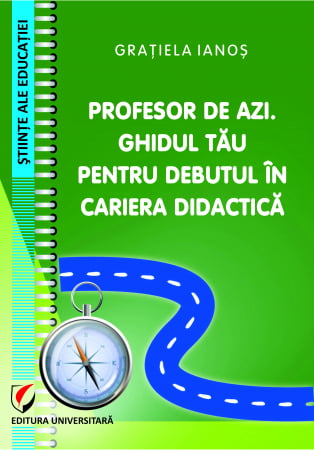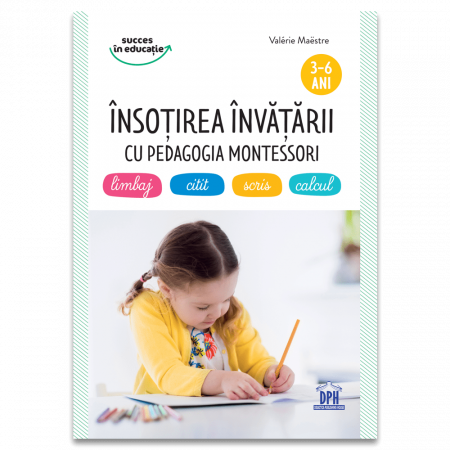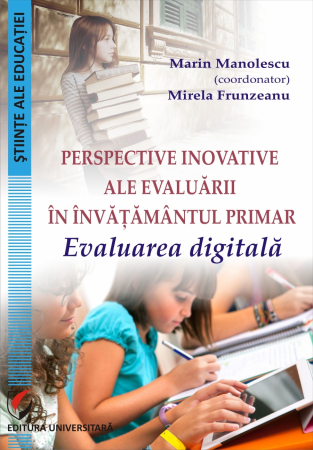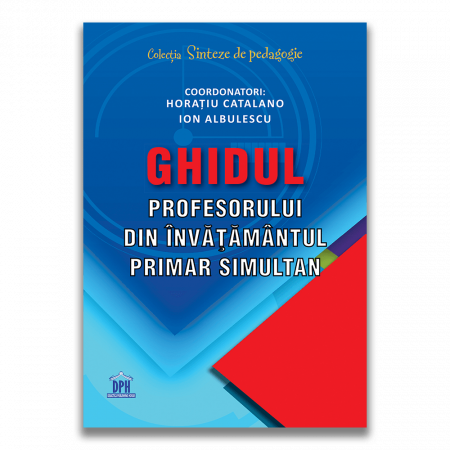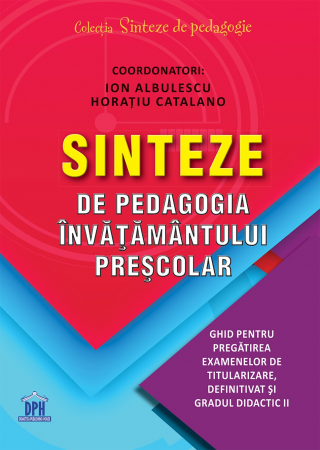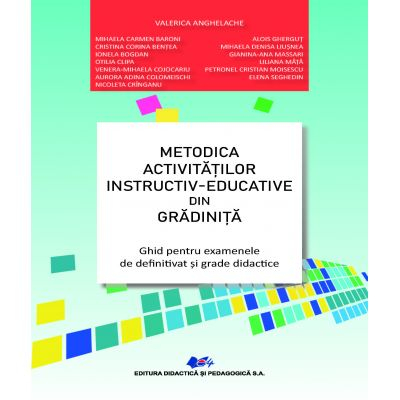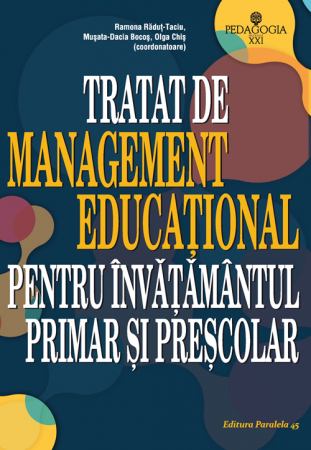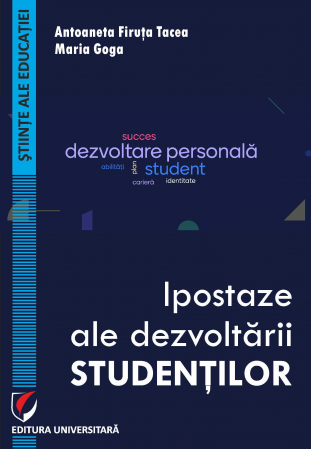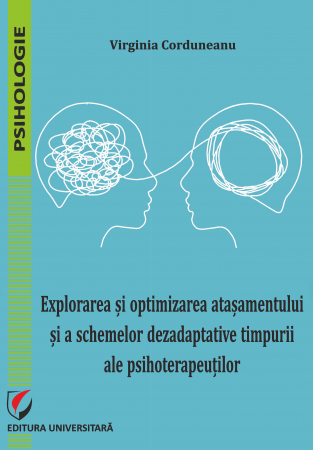6359.png) Methodological landmarks in the organization of pedagogical practice. Working tools for students of the Faculty of Arts. Plastic and decorative arts pedagogy - Doinita Venera Dinca
Methodological landmarks in the organization of pedagogical practice. Working tools for students of the Faculty of Arts. Plastic and decorative arts pedagogy - Doinita Venera Dinca
Publisher: Editura Universitara
Author: Doinita Venera Dinca
Edition: I
Pages: 216
Publisher year: 2023
ISBN: 978-606-28-1686-5
DOI: https://doi.org/10.5682/9786062816865
- Description
- Download (1)
- Authors
- Content
- More details
- Reviews (0)
Also, the work presents a series of tools with the aim of demonstrating that didactic activity is not carried out randomly, but based on documents that regulate and regulate it, namely: education plans, school programs, calendar plans, lesson plans , assessment sheets, etc., all of which facilitate the development of the didactic activity and obtaining good results in the students' learning activity.
Author
-
Methodological landmarks in the organization of pedagogical practice. Working tools for students of the Faculty of Arts. Plastic and decorative arts pedagogy
Download
2. Pedagogical Practice discipline sheet / 11
3. Curriculum. Types of curriculum. / 19
4. Educational framework plan for secondary education (Appendix 1 to OMENCS 3590) / 24
5. School curriculum for the discipline Plastic Education V-VIII (Appendix no. 2 to OMENCS. 3393 / 28.02.2017) / 27
5.1. Comparative analysis of competencies / 42
5.2. Comparative analysis of contents / 46
6. Annual planning - 5th grade (model) / 49
6.1. Detailed calendar planning by learning units - 5th grade (model) / 53
6.2. Annual planning - 6th grade (model) / 77
6.3. Annual planning - 7th grade (model) / 80
6.4. The design of learning units - 8th grade (model) / 82
7. Example of Curriculum at the decision of the school (CDS) / 101
7.1. Example of Curriculum at the decision of the school (CDS) / 105
8. Inclusive education. The student with special needs (CES) / 115
9. Adapted planning for visually impaired students - 8th grade (model) / 117
10. Presentation of plastic education manuals for gymnasium / 126
11. Preliminary considerations regarding the lesson project / 130
11.1. Lesson types / 131
11.2. The structure of the lesson project. Specific design elements of the didactic approach to the Plastic Education discipline / 134
11.3. Lesson projects for the discipline Plastic Education (models) /
12. The components of the student's portfolio / 194
12.1. Questionnaire for students in specialized pedagogical practice / 195
12.2. Planning - demonstration activities supported by the mentor teacher / 196
12.3. Planning - lessons held by the practicing student / 196
13. Rules to be respected by students in supporting lessons / 197
14. Evaluation of students in pedagogical practice through trial lessons and the final lesson / 197
15. Model - Lesson evaluation sheet / 199
16. Questionnaire - Self-evaluation of practice activity / 201
17. Questionnaire - Appreciation of the relationship with the mentor teacher / 203
18. Feedback for the mentor / 205
19. Student capacity assessment sheet at the end of the pedagogical practice activity / 206
20. Instead of ending / 209
Bibliography/ Webography / 212
Broadly speaking, these directions, which in fact embody the advantages of pedagogical practice, are ranked in the following configuration:
1. Pedagogical practice familiarizes students with the school environment, and several aspects are discernible here, namely:
a. The teachers exercise certain functions, and they must be known by the practicing students;
b. Teachers must possess certain competencies; these skills must be known because they have a major impact on the students' training;
c. In the class, the interactions are exercised in a certain form and in a certain dynamic;
d. A certain type of influence is exercised in the classroom, and this must be correlated with the types of tasks, with the training contexts, with the age and experience of the students, etc.;
e. In class, the teacher displays certain behaviors that can be classified in different didactic styles.
f. didactic communication structured by teachers in the classroom has certain characteristics and they must be known by students who aspire to become teachers and educators.
2. Transposing into practice some knowledge from the field of specialty, psychology, pedagogy, special didactics, and at this level of analysis, aspects related to:
a. How to elaborate the pedagogical objectives of the lesson;
b. How to process the contents of the training to be transmitted to the students;
c. How to develop didactic strategies and what are the criteria that must be taken into account in their configuration;
d. How to stimulate communication and interaction processes in the classroom and outside it;
e. How to stimulate and amplify students' motivation for the learning activity;
f. How are they transposed into practice and how are the didactic principles respected;
g. How to use and promote effective feedback.
3. Pedagogical practice provides a feedback of pedagogical intentions, being able to confirm but also deny many of the efforts of the teaching staff.
Precisely at this level, the following aspects can be considered:
a. Pedagogical practice can reveal the positive parts of training;
b. Pedagogical practice can reveal certain dysfunctionalities;
c. Pedagogical practice can offer suggestions regarding the corrections that must be made to training.
4. Pedagogical practice can offer opportunities for stimulating didactic creativity, and their exploitation will depend on the psycho-pedagogical training of the teaching staff, but also on the imagination and inventiveness of which they are capable.
5. Practice can provide opportunities for good collaboration between institutions (university, application schools, etc.) but also between different categories of people involved (tutors, mentors, students, pupils, etc.) thus favoring the structuring of a culture of collaboration , direction in which a series of deficiencies are manifested in contemporary Romanian education.
The long road of becoming a professional is a winding and difficult one, and that is precisely why pedagogical practice mentors must be aware of the role and importance of their activity vis-a-vis piloting young people who are preparing for a teaching career.
This is the purpose of this material, which we want to be a tool designed to train students in competent psycho-pedagogical practitioners, who will contribute to the good integration of graduates in the perimeter of education or in other perimeters of the social field.
From the structural point of view, the material is designed in such a way as to train the students as competent practitioners absolutely necessary in carrying out an effective didactic activity.
As is natural, in the conception of this material it was desired to respect a progression that would first of all honor the logic of science and later the didactic logic. As a result, a considerable space has been allocated to the problems circumscribed by the educational curriculum, because practicing students must be familiar with the issue of training contents, including aspects related to the methods of selection, organization of the contents, but also aspects related to their concretization in the curriculum documents (education plans, analytical programs, school textbooks).
Since the content issue is a fundamental one in the development of the complex training-learning process, practicing students must form an awareness of future curriculum creators, which means that they must have an active attitude towards this variable of the process of education and not a passive one, as happened many decades ago when the issue of content was left with good knowledge to the responsibility of curriculum designers, to those who elaborated the education plans, school programs or school textbooks. Currently, the situation has changed because, even if the curriculum documents are designed by specialists in curriculum design, in the end, the practitioners will be the ones who will be involved in the implementation of the curriculum and even in its validation.
From this perspective, the material that we present tries to familiarize the practicing students with the most relevant aspects of the curriculum, but also to give them the opportunity to outline or elaborate certain curricular products.
At this level of analysis, we emphasize the fact that we have designed this material through which we selectively present educational plans and analytical programs for certain artistic disciplines, with the clear aim of familiarizing practicing students with the main characteristics of the mentioned documents.
As school time represents an important variable in the general economy of the training-learning process, a significant space was devoted to the presentation of planning models for larger or smaller segments of time; practicing students must be inoculated with the idea that the available time allocated to training is maximized.
How easily one could anticipate that a considerable space was allocated to didactic design, because this also represents a significant variable in the general structure of the training-learning process.
Thus, I designed the material in such a way as to update the practicing students with a series of knowledge related to design, knowledge acquired by them in the Pedagogy discipline, but to add specific elements of design, grafted onto the artistic disciplines, giving the practicing students the opportunity to find that there are major differences between the design carried out in the highly formalized disciplines (mathematics, chemistry, physics) and the artistic disciplines. We would not be able to conclude the analysis of this level without mentioning that the material includes didactic projects carried out in the Plastic Education discipline, with the obvious aim of training students in design skills in the targeted artistic field.
The final part of the material is intended for evaluation issues to show that evaluation within the perimeter of artistic disciplines presents elements of specificity, and this is determined by the specificity of these disciplines which induces a level of subjectivity, something that does not happen in the case of other disciplines where the evaluation processes they are less influential.
As a general note, the material we present has the role of contributing to the pedagogical training of future teachers in pre-university education, Visual Arts specialization.
Customer Support Monday - Friday, between 8.00 - 16.00
0745 200 718 0745 200 357 comenzi@editurauniversitara.ro
![Methodological landmarks in the organization of pedagogical practice. Working tools for students of the Faculty of Arts. Plastic and decorative arts pedagogy - Doinita Venera Dinca [1] Methodological landmarks in the organization of pedagogical practice. Working tools for students of the Faculty of Arts. Plastic and decorative arts pedagogy - Doinita Venera Dinca [1]](https://gomagcdn.ro/domains/editurauniversitara.ro/files/product/large/repere-metodologice-in-organizarea-practicii-pedagogice-instrumente-de-lucru-pentru-studentii-facultatii-de-arte-pedagogia-artelor-plastice-si-decora-726973.jpg)
